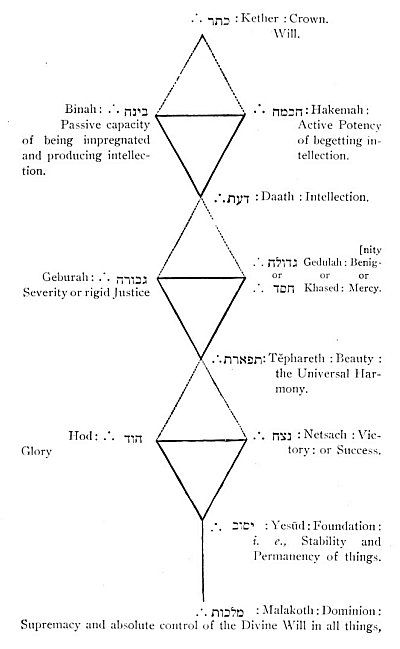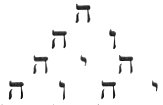To those ancient peoples, this earth was the centre of the Universe. To them there were no other worlds, peopled with living beings, to divide the care and attention of the Deity. To them the world was a great plain, of unknown, perhaps inconceivable limits, and the Sun, the Moon, and the Stars journeyed above it, to give them light. The worship of the Sun became the basis of all the religions of antiquity. To them light and heat were mysteries; as indeed they still are to us. As the Sun caused the day, and his absence the night; as, when he journeyed Northward, Spring and Summer followed him; and when he again turned to the South, Autumn and inclement Winter, and cold and long dark nights ruled the earth; . . . as his influence produced the leaves and flowers, and ripened the harvests, and brought regular inundation,
p. 594
he necessarily became to them the most interesting object of the material Universe. To them he was the innate fire of bodies, the fire of nature. Author of Life, heat, and ignition, he was to them the efficient cause of all generation, for without him there was no movement, no existence, no form. He was to them immense, indivisible, imperishable, and everywhere present. It was their need of light, and of his creative energy, that was felt by all men; and nothing was more fearful to them than his absence. His beneficent influences caused his identification with the Principle of Good; and the BRAHMA of the Hindu_s, the MITHRAS of the Persians, and ATHOM, AMUN, PHTHA, and OSIRIS, of the Egyptians, the BEL of the Chaldæans, the ADONAI of the Phœnicians, the ADONIS and APOLLO of the Greeks became but personifications of the Sun, the regenerating Principle, image of that fecundity which perpetuates and rejuvenates the world’s existence.
So too the struggle between the Good and Evil Principles was personified, as was that between life and death, destruction and re-creation; in allegories and fables which poetically represented the apparent course of the Sun; who, descending toward the Southern Hemisphere, was figuratively said to be conquered and put to death by darkness, or the genius of Evil; but, returning again toward the Northern Hemisphere, he seemed to be victorious, and to arise from the tomb. This death and resurrection were also figurative of the succession of day and night, of death, which is a necessity of life, and of life which is born of death; and everywhere the ancients still saw the combat between the two Principles that ruled the world. Everywhere this contest was embodied in allegories and fictitious histories: into which were ingeniously woven all the astronomical phenomena that accompanied, preceded, or followed the different movements of the Sun, and the changes of Seasons, the approach or withdrawal of inundation. And thus grew into stature and strange proportions the histories of the contests between Typhon and Osiris, Hercules and Juno, the Titans and Jupiter, Ormuzd and Ahriman, the rebellious Angels and the Deity, the Evil Genii and the Good; and the other like fables, found not only in Asia, but in the North of Europe, and even among the Mexicans and Peruvians of the New World; carried thither, in all probability, by those Phœnician voyagers who bore thither civilization and the arts. The Scythians lamented the death of Acmon, the Persians that of Zohak conquered
p. 595
by Pheridoun, the Hindus that of Soura-Parama slain by Soupra-Muni, as the Scandinavians did that of Balder, torn to pieces by the blind Hother.
The primitive idea of infinite space existed in the first men, as it exists in us. It and the idea of infinite time are the first two innate ideas. Man cannot conceive how thing can be added to thing, or event follow event, forever. The idea will ever return, that no matter how long bulk is added to bulk, there must be, still beyond, an empty void without limit; in which is nothing. In the same way the idea of time without beginning or end forces itself on him. Time, without events, is also a void, and nothing.

Moe is the founder of GnosticWarrior.com. He is a father, husband, author, martial arts black belt, and an expert in Gnosticism, the occult, and esotericism.





